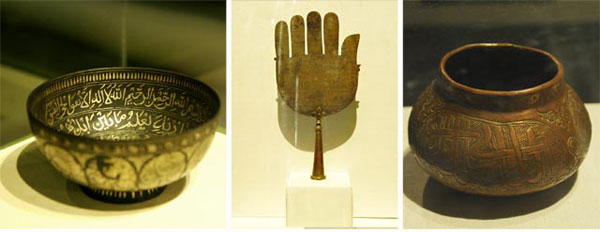The Art of Calligraphy and Beyond exhibition: What it took to be an artist in medieval India
There was work everywhere for calligraphers in medieval India: in the courts of the great Mughals, the Ottoman Turks, and the Shahs of Iran, with whom cultural links were deep. It is this traffic and creative output that is on display at an exhibition titled 'Art and Calligraphy and Beyond' curated by Anamika Pathak and Zahid Ali Ansari, at the National Museum.
The selection of artifacts made of a variety of materials such as ivory, jade, ceramic, textile, wood, metal, glass, paper and leather have been arranged into five main groups: writing implements, religion, faith, tradition and trade. A brass shallow bowl of 15th-century that belonged to Sultan Sikandar Lodi is one of the oldest artifacts in the exhibition. Mundane objects of everyday use have also been treated poetically. The lower part of a pair of scissors has been shaped in the form of the letter 'Ya Fattah' which originates from one of the divine names of Allah.
Calligraphy was also closely linked to matters of faith as the art began with the writing of the Kufic script in Arabic. It was not unusual for noblemen to wear clothes inscribed with a prayer. It was believed that if you wore a talismanic tunic or jacket, you were protected against misfortunes and illnesses.
The exhibition at the National Museum in Delhi will be held until July 12th, 2015
 The Art of Calligraphy and Beyond exhibition: What it took to be an artist in medieval India
The Art of Calligraphy and Beyond exhibition: What it took to be an artist in medieval IndiaSource: www.hindustantimes.com
Man′s beauty is in the beauty of his writing.



